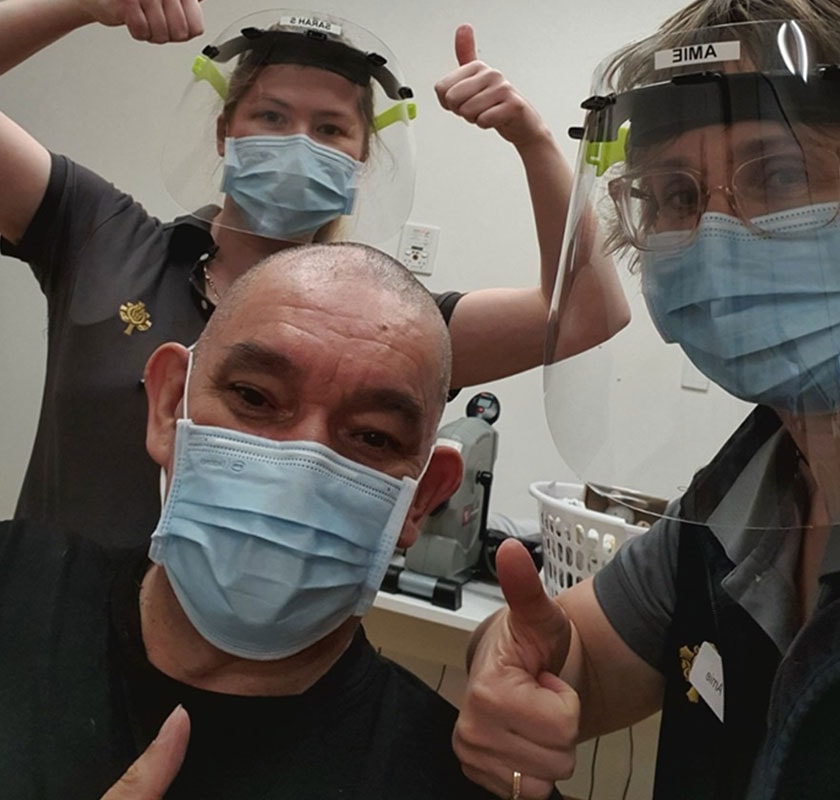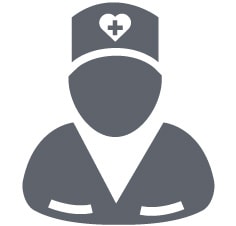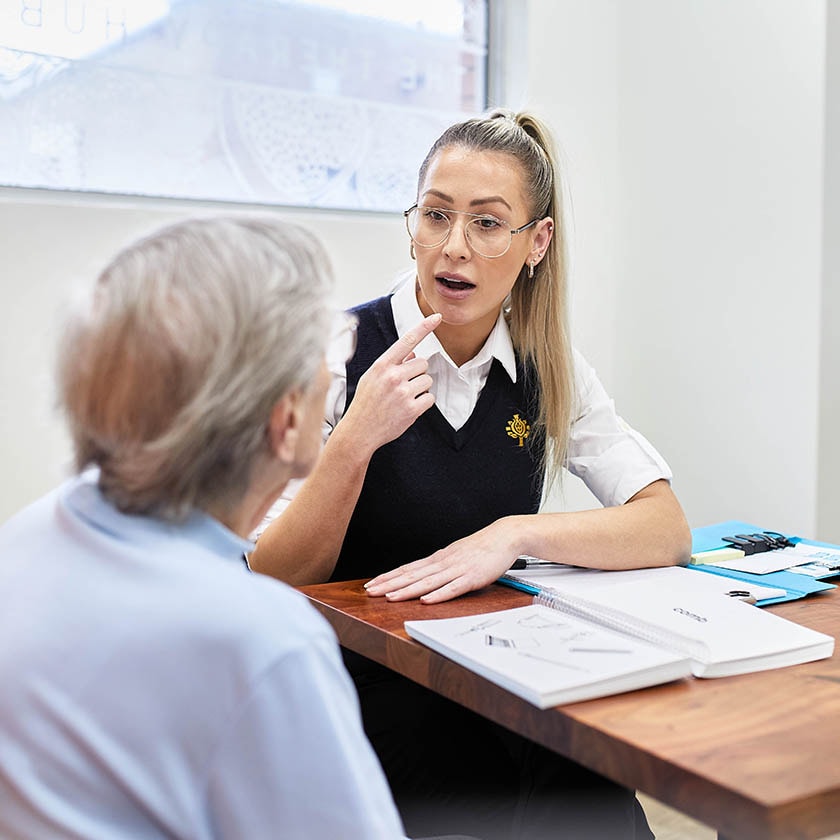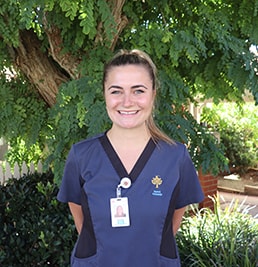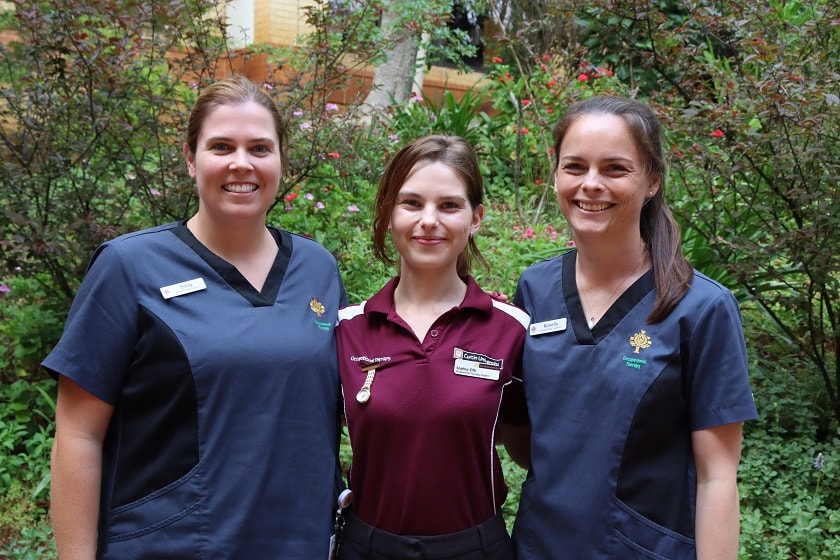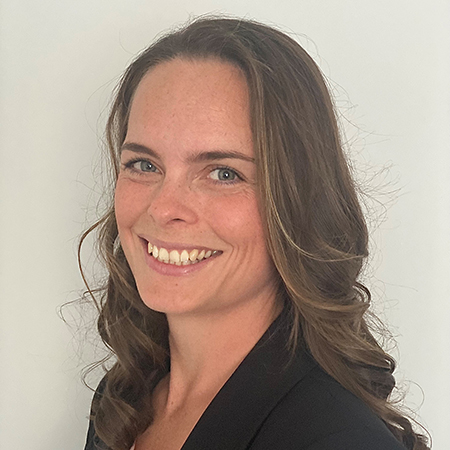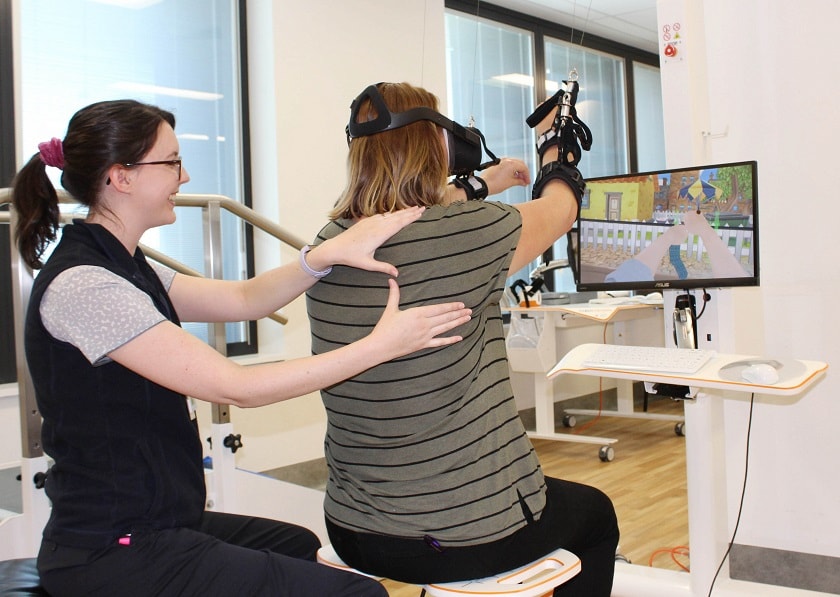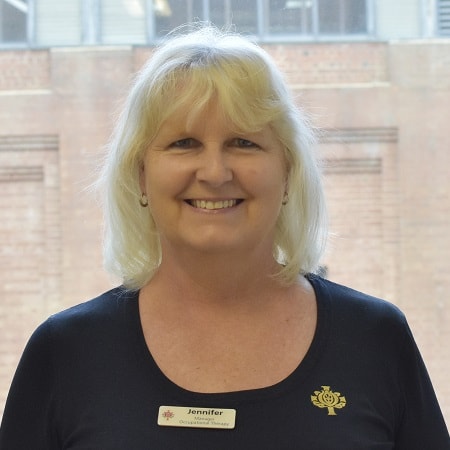Roc, age 62 was packing his bags to catch a flight that sees him travel internationally in research & development for a food processing equipment supplier. Suddenly, he felt tingling in his lips and fell to the floor.
Roc was suffering a stroke, a sudden interruption in the blood supply of the brain.
"It came as shock to me that I had a stroke as I was in good health. I go to the gym, have been a boxer all my life and led a healthy lifestyle. I won’t lie it was the scariest thing to happen to me.
"The stroke affected the whole right side of my body – I had no movement or feeling at all. My vision was also affected," said Roc.
Roc was in a public rehabilitation facility until July 2020. Roc was then transferred to St John of God Frankston Rehabilitation Hospital under an arrangement to help take the pressure off the public health system during the state of Victoria’s COVID-19 response.
While at St John of God Frankston, he started robotic rehabilitation therapy using the Tryomotion Amadeo, Pablo and Pablo Tymo systems – world class technology that improves upper limb, hand and finger movement; and the Tymo system designed to improve weight shifting capability of the legs.
"I feel lucky that I’ve been transferred to St John of God. I have access to this amazing technology and feel I’ve been given a second chance at life – to walk, get back to boxing, return to work and drive a car again," said Roc.
St John of God Frankston Rehabilitation Hospital is one of a few hospitals in Victoria who use this robotic technology for patients recovering from Stroke, Parkinson’s and other brain injury conditions that impact on mobility. Amie Malcolm, Roc’s occupational therapist & clinical lead on movement disorders at St John of God Frankston explains how the technology works,
"The patient is connected to the equipment and sensors detect even the smallest flicker of movement. The repetitive motions the patient makes as part of the therapy lets the brain re-learn how to instruct the arm, hand or fingers to move and improves the patient’s grip and strength."
"When I had the stroke, I was quite depressed about my future. But the St John of God team worked with me to devise a tailored made rehab plan based on my life goals to gain my independence. We have been doing intensive rehab 7 days a week and by using this technology I can see my results on the screen after every therapy session – and it makes me smile! It’s a real motivator, I want to keep getting better and better results. It must be the boxer in me," laughs Roc.
Stroke happens when a blood clot or bleed occurs in the brain that results in a range of physical symptoms that can include paralysis of limbs, loss of sensation, speech and swallowing issues. Patients need to re-learn how to use their bodies which requires intensive rehabilitation therapies.
"I can now walk 25 metres and have movement in my arm. It will be a slow process to full recovery but I know I will walk out of this hospital unaided and that is due to my clinical team, I call them my ‘little angels’," said Roc.
Amie adds, "When Roc came into our care he needed lifting equipment just to move him from his bed. It’s quite remarkable to see his progress and we’re proud of what he has achieved."
Being a hospital patient during the COVID-19 pandemic has presented its own set of challenges to patients and Roc says it has been a personal growth journey for him: "I can’t see my family because of COVID-19 and that hurts. But these wonderful people at St John of God have become my family – they care and it shows in everything they do for me and other patients. This experience has made me more empathetic to others."
Roc is so impressed with his level of care in the private healthcare system that he now plans to taking out private health insurance and is telling his family to do the same.
He says, "The Australian public system is very good, but I think my progress, in large part, is because of this amazing robotic technology and the intensive rehabilitation care from my clinical team. I feel I have many years of life still to live and if I ever need hospital care again I want it to be a place like St John of God".

